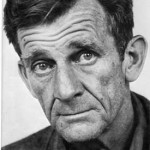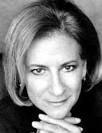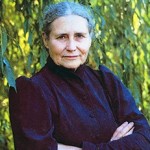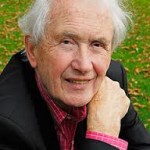Summer School-How To Write Your Peace Corps Book, Lesson # 7
Times are bad. Children no longer obey their parents and everyone is writing a book.
— Cicero, circa 43 BC
In this lesson we are concerned with two aspects of your writing.
- Pacing
- Dialog
Pacing of Your Story
My wife likes to tell a story in great details giving it also a historical setting. For example, she might mention what happened to her when she took her clothes to the dry cleaners. Telling her tale, she will include historical data, asides, the cast of endless characters she saw or waved to, or thought about, even tangentially, from the time she left the house until she reached the cleaners two blocks away. Over the years of our marriage I have listened to many such endless narratives, so now I chime in as soon as she takes a breath with, “Faster! Funnier!”
(Sometimes it works.)
Pacing is everything in the narration of your book
This simply means that all events are not equally important. To keep your readers involved with the telling of your tale, you need to compress some time elements and expand others. For example, depending on your story, you can dispense with telling everything about your Training. As you will recall, Sarah Erdman in Nine Hills selected certain aspects of Training, but not all of Training, for her book.
Other Peace Corps writers in their Peace Corps books Peter Heller (China 1996-98), Marnie Mueller (Ecuador 1963-65), Paul Theroux (Malawi 1963-65), Mary-Ann Tirone Smith (Cameroon 1965-67), P. F. Kluge (Micronesia 1967-69), Kathleen Coskran (Ethiopia 1965-67), Arnold Zeitlin(1961-63) did not even talk about Training.
Still others, Moritz Thomsen (Ecuador 1965-67), opened his memoir Living Poor not with Training, but with getting his Peace Corps application.
I got my Peace Corps application at the post office in Red Bluff, California, put it on the table in the kitchen, and walked around it for ten days without touching it, as though it were primed to detonate-as indeed it was-trying to convince myself that for a forty-eight-year-old farmer the idea of Peace Corps service was impractical and foolhardy.
Then there is Alan Weiss (Nigeria 1963-64) who wrote High Risk/High Gain, a Peace Corps memoir published by St. Martin’s Press in 1968 that is 254 pages long and is all about his Training at Columbia University in New York City! Go figure.
With regard to your own Peace Corps experience, you have probably already written your memoir, at least in your mind. You can recall a few of your experiences in vivid detail. These events might still seem as if they happened yesterday. Other events perhaps are a bit blurred in your memory. Using both compression and expansion in your writing will help you create a sense of reality for your readers. Many times this means less is more.
Mary-Ann Tirone Smith makes this point about pacing. “When I decided to write a commercial thriller (which turned out to be An American Killing in which I made a killing), I knew how important pace would be. So I outlined Presumed Innocent by Scott Turow concentrating on pace. Turow taught me, in Presumed Innocent, that he pace of a thriller had to be a roller coaster ride: Up, up, up, fall off the edge, new chapter, down, down down, up, up, up, fall off the edge, etc. Well, a little more complicated than that for sure, but I felt confident I could create a kind of contrived pace too see that the plot created anxiety in the reader and was immediate–happening while you’re reading , while at the same time keeping the characters real and provocative. The latter was demonstrated by Turow’s managing to have Sandy, his protagonist, be a total asshole, yet entirely sympathetic. Actually, I worked so hard on my analysis that I found a plot flaw that no one else seemed to notice.”
made a killing), I knew how important pace would be. So I outlined Presumed Innocent by Scott Turow concentrating on pace. Turow taught me, in Presumed Innocent, that he pace of a thriller had to be a roller coaster ride: Up, up, up, fall off the edge, new chapter, down, down down, up, up, up, fall off the edge, etc. Well, a little more complicated than that for sure, but I felt confident I could create a kind of contrived pace too see that the plot created anxiety in the reader and was immediate–happening while you’re reading , while at the same time keeping the characters real and provocative. The latter was demonstrated by Turow’s managing to have Sandy, his protagonist, be a total asshole, yet entirely sympathetic. Actually, I worked so hard on my analysis that I found a plot flaw that no one else seemed to notice.”
Two elements that have an impact on pace are the:
- Organization of the story
- Selection of tense
Organizing Your Story
After you’ve decided which details to dramatize and which to summarize, you must next decide on a plan for organizing the sequence of events your wish to relate. You have several options.
- Chronological Order: You start at the beginning of your story and move ahead, step by step, toward the end. Remember Bonnie Lee Black’s (Gabon 1996-98)
 comment about the telling of the typical Peace Corps story? “Peace Corps memoirs tend to have a predictable time-order coherence, with which every RPCV can readily relate: I applied… I trained… I was posted… I was (culturally) shocked… I taught… I explored… I listened… I (slowly) adapted… I was humbled… I learned….”
comment about the telling of the typical Peace Corps story? “Peace Corps memoirs tend to have a predictable time-order coherence, with which every RPCV can readily relate: I applied… I trained… I was posted… I was (culturally) shocked… I taught… I explored… I listened… I (slowly) adapted… I was humbled… I learned….” - Beginning in the Middle: You can also start in the middle of the action and then flash back to the beginning. This method captures your reader’s interest and helps to build suspense. For example, Sarah opened with the woman giving birth. Sarah told me, “My editor was concerned that the book started off too slowly – the first fifty to seventy pages were mostly scene-setting and didn’t have much plot. So it was his idea to pull out a more exciting chapter from the middle and put it at the beginning.”
- Beginning at the End of your Tour: You could start your book–for example–with the COS session where ‘everyone’ is in the room, a whole cast-of-characters, your group! (And you know your group is full of Characters!) Then flash back to events and drama over the two years and tell your story as you refer to those sitting around you in the COS session.
Selection of Tense
When writing about past events, it’s possible to use either the past or present tense. For example:
It was growing dark as I walked down Haile Selassie I Avenue. Two dogs huddled by a tin-roofed house at the side of the tarmac. I saw their eyes glittering from Ramadan hunger in the shadowy evening.
Or:
It is growing dark as I walk down Haile Selassie I Avenue. Two dogs huddle by a tin-roofed house at the side of the tarmac. I see their eyes glittering from Ramadan hunger in the shadowy evening.
On some occasion, authors mix both tenses to create a sense of urgency. The following passage by South African writer Doris Lessing who recounts her humiliating  encounter with immigration officials during her travels in segregated South Africa. It is from her book, A Small Personal Voice. The shifts in tense are in the third paragraph.
encounter with immigration officials during her travels in segregated South Africa. It is from her book, A Small Personal Voice. The shifts in tense are in the third paragraph.
When next I entered the Union it was 1939. Sophistication had set in in the interval, and it took me no more than five minutes to persuade the official that one could be born in a country without being its citizen.
The next two times there was no trouble at all, although my political views had in the meantime become nothing less than inflammatory: in a word, I had learned to disapprove of the colour bar.
This time, two weeks ago, what happened was as follows [here’s a sudden shift to present tense] one gets off the plane and sits for about fifteen minutes in a waiting room while they check the plane list with a list, or lists, of their own [Now a shift back to past tense] They called my name first, and took me to an office which had two tables in it…
To Be Or Not To Be
One more word about verbs. The very funny novelist, Rita Mae Brown in her book Starting From Scratch, writes:
If you want to get your black belt in boredom, load your sentences with variations of the verb TO BE. Granted, sometimes you can’t help using them, especially with nonfiction, but at every opportunity knock out IS, ARE, WAS, etc., and insert something hot.
Narrative is concerned with action. That’s why it’s important to choose verbs that resonate with movement and life.
When we get to rewriting, I’m going to want you to read your book out loud, editing for sound and rhythm – two indicators of pace. You’ll “hear” yourself the chunky sentences and the weak verbs.
Dialog
Dialog is an essential element of successful narration. It creates a sense of verisimilitude and immediacy. They speak, therefore they are; we overhear, therefore, we believe. Nothing defines characters and relationships more quickly than speech.
Rules for Indicating Dialog
There are certain rules of rendering dialog; so, let me cover those rules. Some of what I have to say about dialog is obvious, and you know it, but let me cover all the bases so that we are all on the same page.
Quoting Comments and Conversations
When you are working on your story and wish to quote exactly what someone said, you use quotation marks so there can be no question about who is speaking. This is the standard practice in dialog.
In old Viking Portable editions, you might find dialog handled differently, especially in stories by James Joyce. In his novel, A Portrait of the Artist as a Young Man dialog is set off this way:
— What is your father?
Stephen had answered:
— A gentleman.
Then Nasty Roche had asked:
— Is he a magistrate?
Now in Frank McCourt’s Angela’s Ashes we get a different way to use dialog. (What’s with these Irish?) Here is McCourt trying to suggest the way children would talk:
talk:
She says, what did you do? What did you do to the child?
I don’t know what to say. I don’t know what I did.
She pulls my ear. Go home. Go to bed.
Bed? In the middle of the day?
She pushes me toward the playground gate. Go.
She picks up Malachy and waddles off.
The moral of this story is that in the telling, you can do anything if you can make it work.
Direct Quotation
For direct quotation, surround the exact words of a speaker with quotation marks. Each person’s words, no matter how brief, are placed in a separate paragraph with quotation marks at the beginning and end of his or her speech. Here’s what I mean:
“Guess what? I’ve been accepted into the Peace Corps.”
“You have! Where are you going?”
“I’m not sure. I think Asia.”
“When are you leaving?”
“They didn’t tell me.”
“You don’t know?”
“Well, that’s what the Peace Corps is like. My recruiter said, ‘you have to be flexible to be a PCV’.”
“Sounds like an incompetent government bureaucracy.”
“That too.”
Quoting Printed Material
When you use passages of printed material written by someone else, enclose the material in quotes in your manuscript, and be certain to provide credit. (If you are using quotes from others, be certain that you are familiar with copyright law and its application in your situation.)
Remember if a full paragraph of quoted material is followed by a second paragraph that continues the quotation do not close the quote at the end of the first paragraph. Do, however, put open-marks at the start of the following paragraph. Continue in this fashion for any succeeding paragraphs, using close-quote marks only at the end of the quoted material.
Direct vs. Indirect Quotations
In nonfiction, dialog is sometimes quoted directly and sometimes quoted indirectly. Here are a few lines from the Isak Dinesen passage from the Earthquake sections that we looked at earlier.
Early next morning, Juma brought me my tea and said: “The King of England is dead.” [direct quotation.]
I asked him how he knew. [indirect quotation]
Dinesen might have written the second line as a direct quotation:
“How do you know, Juma?”
Either way would be acceptable in this passage, but Isak Dinesen apparently chose to de-emphasize her own role in the conversation by using an indirect quotation.
There are no specific guidelines for deciding when to quote directly and when to use indirect quotation. Direct quotation is usually the preferred approach. However, after writing a narrative, you should read your piece carefully and asked yourself these questions.
- Do my quotes advance the action of my story?
- Do my quotes relate information?
- Do my quotes contribute to characterization?
If a direct quote does not accomplish at least one of these objections, you might revise it into an indirect quote. Remember: too much dialog is just as detrimental as too little.
Three Functions of Dialog
In nonfiction, dialog is used to deepen our knowledge of the people we write about: it characterizes their motivations, hopes, fears, and ambitions. It also conveys information and moves the action along.
Here are thoughts on each of these three ways dialog functions.
Enhancing Characterization: In real life you rarely know much about someone until you hear him or her speak. If you are introduced to a young man, you listen to the way he says things. The words he uses, his accent, and his speech mannerisms all help to define his personality. Likewise, when you’re writing narrative, your characters reveal their personality through direct quotes.
Conveying Information: Conveying and explaining information by dialog is one of a writer’s most useful devices. If you’re careful not to overload dialog with facts, the reader will be unaware that he or she is being informed.
Advancing the Action: Dialog also advances the action of your story. It can reveal or emphasize important details while serving as a transition to the next section of your book.
One Final Word (Or Three)
There are three sources of dialog in narration:
- Quotations that you gather as part of an interview or from research.
- Quotations that come from memory as you depict personal experiences.
- Quotations that you make up that fit the scene you have written. (hey, it’s creative non-fiction).
There’s one cardinal rule: dialog must ring true. Effective dialog sounds the way people talk, but few writers attempt a phonographic representation of speech – partly because much day-to-day speech is nonfunctional. (“Pass the butter.” “May I have the car?”) All the dialog in your book must be instructive, telling, informative, and it will push the narrative forward. Always remember: conversation is not dialog.
Using Real Names of Real PCVs
The question I am asked about the most is this one: Can I use real names? Obviously, if you do, and you are untruthful (or so it might seem to the person) you might get sued. My advice is to not use real names and also alter the ‘circumstances’ i.e., site where PCV or HCN lived or worked, etc. All memoirs–however faithful to the facts–are creative non-fiction. It makes a better story. So, avoid headaches and hardships and just make your point with a pseudonym, nom de guerre, nom de plume, alias, AKA, or summer name.
SEVENTH ASSIGNMENT
Write one new scene – length: 750 to 1000 words. Use material that you have written or are working now. And use as your model Hemingway’s “Hills Like White Elephants” where almost everything takes place within quotation marks.
Your Cicero quote in Lesson 7 is pure genius and because of today’s post on Garrison Keillor’s “Writers Almanac” today on Philip Larkin likenesses suggest themselves to me because you too can have edges that I like to learn from: if possible at this late stage of my 78 years. I have a go-to guy for that, an old friend, John Bennett up in Ellensburg, WA (he’s the guy who started VAGABOND mag in the 60’s while in West Germany) and he’s rougher than the three of you possibly together and at the same time canny, fine, sharp as well as each of you. Maybe ‘astringent’ could be a good adjective for you four; it’s not certainly ‘babylony’ for you the four-cornered coronet of however drear, cheer for me. Ed
John–Okay–I’ve been waiting for this clarification–no “real” names–okay but changing “circumstances” will take some work since the idiosyncrasies of the groups I worked with is and important apart of the story. Cheers, Mark
Pretty gret post. I simply stumbled uplon your
blog and wanted to mention that I have reeally loved browsin your blog posts.
In any case I’ll be subscribing to your feed and I hope you
write again soon!